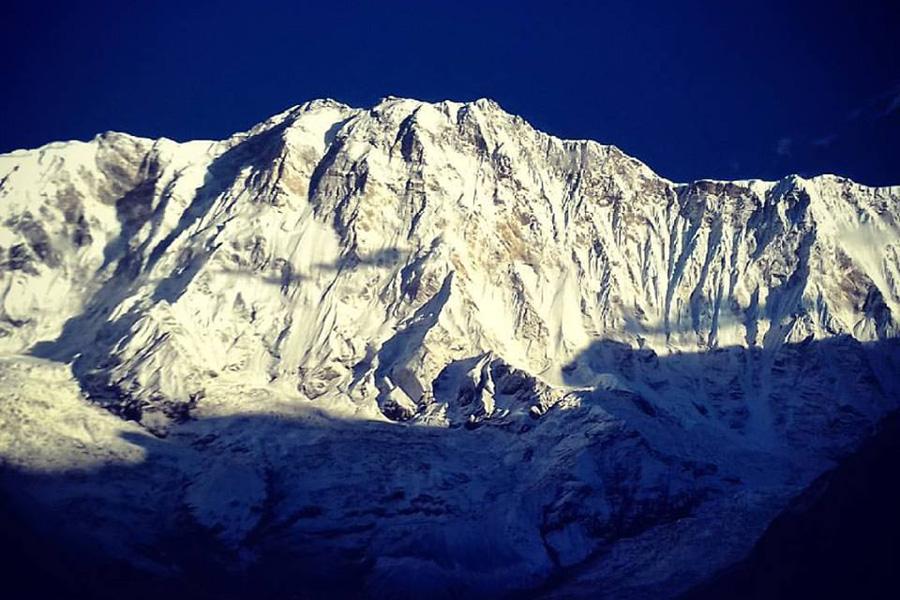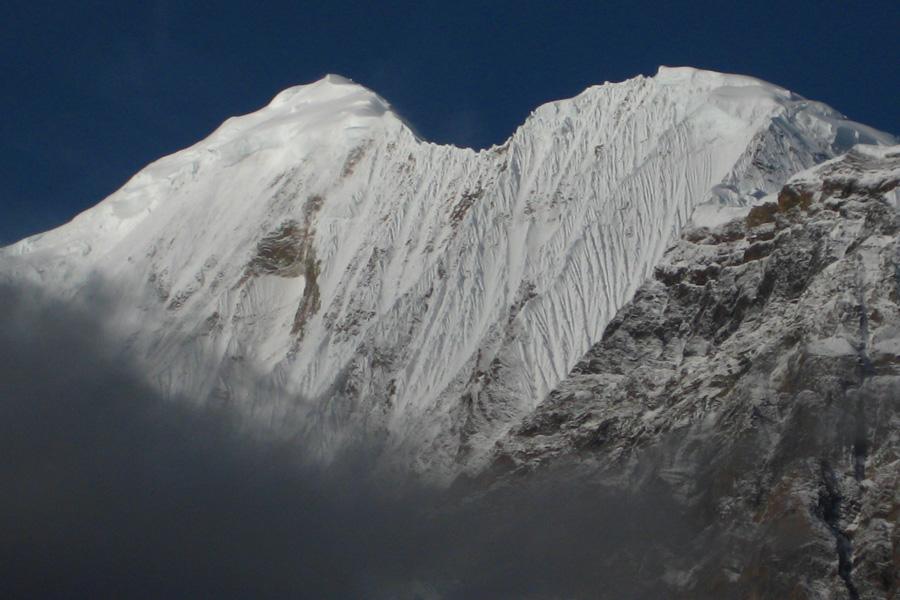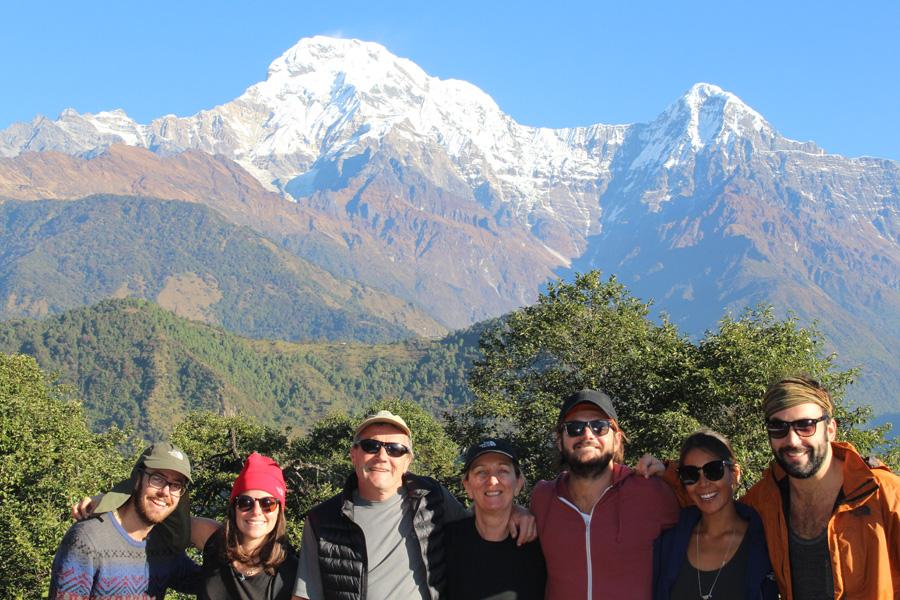Overview
The Annapurna Circuit is one of the most popular trekking routes in the world. It is located in Nepal. It offers a chance to experience a variety of landscapes, from subtropical forests to high mountain deserts. The trek usually takes around 12 to 21 days. It covers a distance of 160 to 230 kilometers. It is famous for its stunning views of the annapurna mountain range. And also famous for its diversity of cultures and environments along the way.
Thorong La Pass is the highest point on the Annapurna Circuit, with an elevation of 5,416 meters (17,769 feet). It is a challenging yet rewarding part of the trek and an incredible achievement for trekkers. You can enjoy breathtaking views of the surrounding mountains, including Annapurna, Dhaulagiri, and other peaks. The path to Thorong La is tough, but the views make it worth every step.
Crossing Thorong La Pass is a bucket-list experience for many trekkers. It is not just about reaching the highest point but also about pushing yourself to your limits and enjoying the beauty of nature. The thrill of being at such high altitude and the unforgettable scenery are reasons why so many trekkers dream of crossing Thorong La. It is a once-in-a-lifetime adventure that leaves lasting memories.
Highlights for Thorong La Pass
The Annapurna Circuit is an unforgettable and adventurous journey filled with challenges and exciting memories and experiences. The scenic views from Thorong La Pass are breathtaking and offer a true highlight of the trek.
- Highest Point of the Annapurna Circuit – Thorong La Pass stands at 5,416 meters (17,769 feet), offering a major achievement for trekkers.
- Breathtaking Mountain Views - Panoramic views of Annapurna, Dhaulagiri, and other towering peaks.
- Challenging Terrain - The trek involves a tough climb, especially at high altitudes, testing both physical and mental endurance.
- Cultural Experience - Interaction with local communities such as the Gurung, Thakali, and Tibetan cultures along the trek.
- Adventure of a Lifetime - A unique and unforgettable experience that draws trekkers from around the world.
- Manang Village - A beautiful and culturally rich village offering acclimatisation opportunities and stunning views of the Annapurna range.
- Muktinath Temple - A sacred pilgrimage site located near the descent from Thorong La.
- Acclimatisation at Yak Kharka - A key stop for acclimatisation before the final ascent to Thorong La.
- Sense of Accomplishment - Reaching Thorong La Pass provides a rewarding sense of achievement which makes the effort worthwhile.
- Thorong Phedi Village - An important resting point before the final ascent which offers stunning mountain views.
- Sunrise from High Camp - A memorable sunrise experience from High Camp on the way to Thorong La which offers amazing views of snow-capped peaks.
Preparation for Thorong La Pass Trek
Preparation for Thorong La Pass trek requires careful planning and well-prepared gear as it is the highest point of the Annapurna Circuit. This high altitude trekking can cause sickness if you’re not prepared. It's very important to take your time to adjust to the altitude and stay positive throughout the journey. Here are some several important steps to prepare for a safe and comfortable trek:
- Physical Fitness: Get fit with cardiovascular exercises and hiking practices to handle the trek’s challenges: Long walks will help stimulate trek conditions.
- Acclimatisation: Spend extra days at places like Manang and Yak Kharka to adjust to high altitudes.
- Altitude Sickness Prevention: Drink plenty of water and pace yourself to avoid altitude sickness. Carry medication like Diamox and monitor your health during the trek.
- High-Altitude Sleeping Bag: Bring a sleeping bag rated for freezing temperatures, as it gets cold at night, especially near the pass.
- Nutrition and Snacks: Carry energy-rich snacks like nuts, dried fruits, and energy bars to keep your energy up during the long trekking days.
- Mental Preparation: Mentally prepare for the physical challenge and unpredictable weather. Stay positive throughout the trek.
Outline Itinerary for Thorong La Pass via Annapurna Circuit
Day 1: Arrive in Kathmandu and prepare for the trek.
Day 2: Drive or fly to Besisahar. It is the starting point of the trek.
Day 3: Trek from Besisahar to Bhulbhule.
Day 4: Trek from Bhulbhule to Syange.
Day 5: Trek from Syange to Tal.
Day 6: Trek from Tal to Chame. It passes through beautiful forests and villages.
Day 7: Trek from Chame to Upper Pisang, with scenic views of Annapurna and Pisang Peak.
Day 8: Trek from Upper Pisang to Manang. It's a key acclimatisation point.
Day 9: Rest day in Manang for acclimatisation and exploration.
Day 10: Trek from Manang to Yak Kharka, gradually gaining altitude.
Day 11: Trek from Yak Kharka to Thorong Phedi. It’s the last stop before the pass.
Day 12: Cross Thorong La Pass and ascend to Muktinath.
Day 13: Trek from Muktinath to Jomsom.
Day 14: Fly or drive from Jomsom to Pokhara.
Day 15: Drive or fly back to Kathmandu.
Thorong La Pass Difficulty Level
Trekking difficulty level for Thorong La Pass depends on several factors including the trekkers’s experience, weather conditions, and the rugged terrain. Here are some challenges while trekking Thorong La Pass:
- High-Altitude: There is a high risk of altitude sickness because of the elevation of 5,416 meters.
- Cold Weather: The temperatures are extremely cold, especially at higher altitudes and during nights.
- Steep Ascents: The uphill climbs are tough and tiring particularly near Thorong la Pass.
- Weather Conditions: The Thorong La weather conditions are unpredictable, with snow and rain making the trail slippery and challenging.
- Long Trekking Hours: The trek often exceeds 6-8 hours on tough terrain.
- Risk of Avalanches: The areas are dangerous avalanche-prone areas especially during winter and spring months.
- Limited Emergency Services: Lack of immediate medical help or evacuation options in case of emergencies.
- Navigating Rocky Terrain: The trail can be rough and rocky which requires careful footing and balance.
Best Time To Trek Thorong La Pass
The best time to trek Thorong La Pass is during the Spring (March to May) and Autumn (September to November) seasons.
- Spring (March to May): This season offers mild temperatures, clear skies, and beautiful blooming rhododendrons. The weather is stable which makes it ideal for trekking at high altitudes.
- Autumn (September to November): This season offers dry and stable weather with clear views of the surrounding mountains. Temperatures are moderate and the trekking conditions are perfect for reaching the pass.
I recommend you to avoid the Monsoon season (June to August) because of the heavy rains and the Winter season (December to February) due to extreme cold and possible snow storms which can make the trek dangerous.
Thorong La Pass Trekking Permits
You will need two permits to trek through Thorong La Pass in Nepal. These permits are required to ensure the safety of trekkers, help preserve the environment, and manage tourism in the region.
- Trekkers' Information Management System (TIMS) Card: A mandatory permit for all trekkers in Nepal. You need to show your TIMS permit at check-posts and police check-posts along the trekking routes.
- Annapurna Conservation Area Project (ACAP) Permit: It is required because Thorong La Pass is in the Annapurna Conservation Area. The ACAP Permit is required for all trekking trails in the Annapurna region. The permit is maintained by the National Trust for Nature Conservation to protect wildlife and nature. The ACAP Permit is required for all trekking trails in the Annapurna region .
- The permit costs NPR 3,000 per person for single entry, regardless of the number of days
- Children under 10 years old do not need an ACAP Permit
Note: You can get these permits in Kathmandu at the Nepal Tourism Board (NTB) or at entry points along the hiking trail.
1. Permits for Foreigners:
- Annapurna Conservation Area Permit (ACAP): NPR 3,000
- Trekker’s Information management System (TIMS) Card: NPR 2,000
- Special Permit (if requires): USD 10-20 (for restricted areas)
2. Permits for Nepali Citizens:
- Annapurna Conservation Area Permit (ACAP): Free
- Trekker’s Information management System (TIMS) Card: Free
- Special Permit (if required): Not required for the Thorong La Pass trek
Thorong La Pass Distance
The Thorong La pass covers a distance of approximately 160-230 kilometers. It is typically a 14 to 21-day trek, with trekkers walking 6-8 hours daily while carrying heavy backpacks. The distance can vary depending on the specific route you take. Trekkers are requested to walk slowly and take rest by acclimating with the weather to avoid altitude sickness. However, the approximate distances for the trek are:
- Besisahar to Bhulbhule - 6-7 km
- Bhulbhule to Ngadi - 8 km
- Ngadi to Jagat - 11-12 km
- Jagat to Dharapani - 12-13 km
- Dharapani to Chame - 14-15 km
- Chame to Pisang - 15-16 km
- Pisang to Manang - 18-19 km
- Manang to Yak Kharka - 10-11 km
- Yak Kharka to Thorong Phedi - 6-8 km
- Thorong Phedi to Thorong La Pass to Muktinath - 16-18 km
- Muktinath to Jomsom - 20-22 km
- Jomsom to Pokhara - 25-30 km
Total distance: Approximately 160-230 km, depending on the specific route and starting/ending points. The trek duration includes acclimatisation, crossing the pass, and trekking through Annapurna Conservation Area with Muktinath Temple.
Thorong La Pass Trek Cost
The cost of the Thorong La Pass trek varies on your choice of trekking package, accommodation preferences, travel style, and whether you’re trekking with a guided tour. You must hire a licensed guide because the Nepal Government has mandated that trekkers must have a guide or porter when trekking in Annapurna Conservation Area. Therefore, trekking without a guide is no longer allowed. Here’s a breakdown of the cost for Thorong La Pass:
Cost for Guided Thorong La Pass:
The cost of a guided Thorong La Pass trek in Nepal depends on the number of people and the plan. The cost can range from $453 to $1375 per person.
Cost Factors:
- Number of people: The cost per person is usually lower for larger groups because expenses are shared.
- Plan: The cost may vary depending on the plan, such as the length of the trek.
- Lodging: The cost of lodging depends on the type of accommodation, such as basic tea houses or luxury resorts.
What's included
- Meals
- Accommodation
- Transportation, such as jeep or bus
- Guide
- Porter
- Permits
- Seasonal fruits
- First aid box
What to Pack for the Annapurna Circuit Trek via Thorong La
Packing for the Thorong La Pass is the most important part of the trek. It assures you have all the essential gear to stay safe, comfortable, and well-prepared for the challenging weather conditions and high altitude you’ll encounter along the trail.
1. Clothing:
- Thermal tops and bottoms for base layers
- Fleece or down jacket for warmth
- Waterproof and windproof jackets and pants
- Lightweight windproof as well as waterproof trekking pants
- Insulated and windproof gloves
- Warm hat for cold weather
- Footwear like waterproof trekking shoes and sandals
2. Gear:
- Trekking Bag up to 30-40 litres
- Sleeping Bag
- First-aid kit
- Trekking stick
- Water bottles
- Powerbank and multiple batteries
- Flashlight/Headlight
- Sunglasses to protect from uv rays of sun
3. Personal Items:
- Toiletries includes toothpaste, toothbrush, soap, shampoo, wet wipes, and more
- Camera/Smartphone
- Quick Dry or lightweight towel
- Sunscreen
- Lip balm
- Travel documents include passport, permits, and insurance
- Cash for donations in tea houses
4. Food and snacks:
- Energy bars, energy supplements, and electrolyte tablets
5. Optional Items:
- Earphones
- Gaiters
Acclimatisation Tips for Crossing the Annapurna Circuit’s Highest Point
- Eat healthy and filling food to keep your energy up.
- Avoid alcohol and smoking as it makes altitude sickness worse.
- Take breaks, rest regularly and don’t push yourself too hard.
- Drink lots of water to stay hydrated to avoid feeling sick.
- Go higher during the day, but sleep at a lower altitude.
- If you feel unwell, go down to a lower altitude.
- Rest for a day at higher altitudes to adjust with the weather and the surroundings.
Safety Tips and Advices:
- Stay on marked trails: You should always follow the main paths. Staying on the marked routes would help you avoid getting lost. It ensures your safety and minimizes the risk of accidents.
- Wear proper gear: It is essential to wear comfortable shoes for walking on rough terrain. You should bring layers of warm clothing to protect yourself from cold temperatures especially at higher altitudes.
- Take it slow: You should not rush and must listen to your body. Taking breaks and walking slowly allows your body to adjust to the thinning air of Thorong La Pass.
- Carry food and water: You should always bring enough food and water to last for the entire day of trekking.
- Check the weather: Before attempting the Thorong La Pass, check the weather forecast to ensure clear skies and good conditions for trekking. Bad weather, such as snow storms or heavy rain, can create dangerous conditions
- First aid kit: Always carry a well-stocked first aid kit with essentials like bandages, antiseptic, pain relievers, and altitude sickness medications.
- Avoid alcohol and smoking: Both alcohol and smoking can affect your breathing and worsen altitude sickness.
Conclusion
Thorong La Pass is the highest point of the Annapurna Circuit. It offers one of the most rewarding and challenging Himalayan adventures. It provides stunning panoramic views of the surrounding snow-capped peaks, including Annapurna, Dhaulagiri, and Machapuchare. The pass is known for its extreme trails and unpredictable weather, so trekkers must be well-prepared for the altitude and conditions.
The Thorong La trekking routes allow you to experience the majestic beauty of the Himalayas. From scenic valleys to rugged mountain paths, the Annapurna Circuit offers something for all levels of trekkers. You’ll encounter picturesque villages, diverse cultures, and breathtaking landscapes, making this trek unforgettable. Whether seeking a connection with nature or immersing yourself in the local culture, the Thorong La Pass trek promises an experience you will cherish forever.
Author: Samikshya Kalyan
Date: 12th December, 2024
Related Trip

























